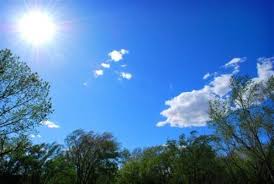
“Waqf al Suwwan “ meteoritic impact in Jordan a potential cause of the Deluge
shahennews – D Mohamaed Al Farajat
Maan Governorate is a sparely populated area in Jordan but one of the richest in its natural resources such as phosphates, quartz sand, granite (marble), other industrial rocks and groundwater. It is also very rich in its natural landscape extending from the western highlands east of Wadi Araba with elevations of more than 1200 meters above sea level with snow in winter, and falling down in the eastern part to the steppe with very scarce rainfall. The worldwide known spectacular Wadi Ram is part of this landscape with unique hiking and air sailing possibilities.
The governorate cultural richness is also very large with Petra, the red rose city curved in the rocks, one of the world wonders and many other historic places of relevance to tourism.
In addition to all the above the northeastern part of the governorate witnessed one of the most spectacular natural events which must have changed the wider surrounding areas climate, living, soils and other natural conditions. This event is the large meteoritic impact which hit the area at coordinates North 310.03′ and East 360.48′ creating a crater of about 1200 m rim diameter and a surrounding ring of about 6000 m in diameter looking like a small dish put in a large dish in the otherwise flat topography of the area.
This meteoritic impact site is one of the most proven impact site worldwide with so many evidence pieces which complete each other to make it a unique site on the world map. And because the area is arid (steppe) with almost no vegetation the two mountain rings are very obvious to have attracted the attention of Bedouins to call them the “Mountain of standing chert” ( In Arabic: Jabal Waqf as Suwwan), where the chert beds are found deformed in a vertical position instead of their original horizontal layering.
Meteoritic impacts of all sizes hitting areas on the earth moon and other planets and moons are every day’s events. But large meteoritic impacts are rare but of tremendous implications to life, climate, soils, rocks among others. One of these large meteorites led to the extinction of more than 65% of life on earth about 65 million years ago and among the extinct species are the dinosaurian. Waqf as Suwwan impact is young, but until now no conclusion about its age has been reached.
Waqf as Suwwan meteoritic body of about 500 m in diameter reaching the Earth’s surface with a velocity of more than 18 kilometers per second and a temperature of around 6000 degrees centigrade excavated huge amounts of earth material and ejected them into the atmosphere. Large ejected pieces fell back to Earth near the impact site but fine grained pieces remained in the atmosphere and according to the size of the meteorite, its velocity and the type of rocks it hits, fine dust particles might have surrounded the whole Earth or large parts of it. The sun light then did not reach the Earth surface and it became dark and heavy rains must have started and continued clearing the atmosphere of dust and impact gases for months or years producing heavy continuous flooding.
A meteorite of the size of Waqf as Suwwan; about 500 m in diameter and a velocity of more than 18 kilometers in a second produces when it hits the Earth very severe earth quakes with damaging effects in a diameter of around 1000 kilometers around the impact site, with no stone remaining in place and accordingly life becomes for most creatures impossible.
Such effects produced by a meteoritic impact produces are somehow reported in the Bible, Quran, Gilgamesh among others under the Deluge (Flooding), with disappearance of creatures, wild fires etc.
Scientifically, the story of the Deluge can be explained by a meteoritic impact proceeding the flooding.
Has Waqf as Suwwan in Maan Governorate anything to do with the Deluge (the flooding) or was it another meteoritic impact or another reason which caused it? This question awaits further investigations and analyses of Waqf as Suwwan meteoritic impact site, especially its age.
But, in conclusion Waqf as Suwwan remains a unique site on Earth, adding to the richness of Maan Governorate on natural and historic wealth. The site deserves protection by the government as it also adds a new natural, and may be spiritual touristic site to Jordan.
Selected References
Salameh E, Khoury H and Schneider W: Jebel Waqf as Suwwan,Jordan: apossible impact crater – a first approach: Z.dt.ges. Geowiss.157/3, p 1-8, Stuttgart, 2006.
Salameh E, Khoury H, Reimold U W and Schneider W: The first large meteorite impact structure discovered in the Middle East:Jabel Waqf as Suwwan, Jordan. Meteoritics and Planetary Science 43 Nr 15 1681-1690, 2008.
Kenkman, T. Khirfan, M. Reimold, W.U. Salameh, E. Konsul, Kh. and Khoury, H.: The structure of the Jebel waqf as Suwwna Impact Crater, Jordan,as recvealed from field analyses, remote sensing and interpretation of geophysical data. AICAC: The First Arab Impact Cretaring and Astrology Conference, 2009
Khirfan, M. Krosta A.P.Kenkmann, T.,Salameh, E. Reimold, W.U.: Remote sensing analyses of Jabal Waqf as Suwwan meteoritic impact. AICAC: The First Arab Impact Cretaring and Astrology Conference, 2009.
Khoury, H. Salameh, E. Schneider, W. and Khirfan, M.: Chert from Jebel Waqf as Suwwan meteoritic impact structure. AICAC: The First Arab Impact Cretaring and Astrology Conference, 2009.
Kenkmann, T. Reimold, U. Khirfan, M. Salameh, E. Khoury, H. and Konsul, K.: The complex impact crater Jabel Waqf as Suwwan in Jordan-: Effect of target heterogeneity and impact obliquity on crater uplift formation.The geological Society of America, special Paper 465, 2010.
Schmieder M. Reimold U.W. Buchner E. Khirfan M. Salameh E and Khoury H.: Shock-metamorphic microstructures in chert from the Jebel Waqf as Suwwan impact structure,Jordan. Meteoritics and Planetary Sciences,1-13, 2011.
Khoury, H. Salameh, E and Khirfan, M: Chert from Jebel Waqf as Suwwan meteoritic impact structure. N. JB. Geol.Paleaont. Abh. 265/3, 281-293, 2012.
Khoury, H. Salameh, E and Reimold, W.U: Mineralogy and Geochemistry of post-impact sedimentary infill of the crater moat and carbonates of the crater floor, Waqf as Suwwan impact structure. Large Meteorite Impact and Planetary Evolution Conference V, 2013.
Salameh, E. Khoury, H. and Reimold, W.U: Drilling the Waqf as Suwwan impact structure, International Journal of Earth Sciences (Geol. Rundschau), 103, p 253-264, 2014.
Till Heinrichs, T. Salameh, E. and Khoury, H.: The Waqf as Suwwan crater, Eastern Desert of Jordan – aspects of the deep structure of an oblique impact from reflection seismic and gravity data.International Journal of Earth Sciences (Geol. Rundschau), 103, p 233-152, 2014.











